
Knowledge Management through Documentation
|
October 16, 2025
|
9 Essential Process Manual Samples for Effective Documentation
Overview
Have you ever thought about how crucial effective documentation is? This article dives into that very idea, highlighting nine essential process manual samples that can really make a difference. We’ll explore tools and strategies that boost clarity, consistency, and operational efficiency.
Now, speaking of tools, let’s talk about digital solutions like SowFlow. They’re game changers when it comes to creating and maintaining process manuals. Not only do they help improve adherence to procedures, but they also lead to better training outcomes and happier customers. And guess what? There are statistics that show how digitized documentation can actually attract new customers. Pretty impressive, right?
So, you might be wondering how all this ties together. The goal here is to make documentation not just a task, but a vital part of your operations that enhances your overall success. Let’s keep exploring these solutions together!
Key Highlights:
- SowFlow enables real-time creation of comprehensive process manuals, improving operational efficiency.
- 47% of companies with digitized documentation attract new customers due to enhanced efficiency.
- The GRADE approach improves the clarity and reliability of procedural guides, boosting adherence and outcomes.
- Checklists serve as structured frameworks that reduce mistakes and enhance training efficiency.
- Evidence tables clarify complex data, improving decision-making and operational outcomes.
- Templates provide consistency and adaptability in documentation, saving time and enhancing quality.
- Regular updates and reviews of documentation ensure relevance and compliance with changing standards.
- The Evidence-to-Decision framework supports systematic assessment of evidence, improving record quality.
Introduction
In a world where efficiency and clarity are super important, you might be wondering why effective process documentation matters so much. Well, it’s never been more critical! Organizations are increasingly turning to innovative solutions like SowFlow, which totally changes the game for how teams create and manage process manuals. Imagine being able to document everything in real-time, right from your browser! SowFlow not only makes it easier to whip up standard operating procedures (SOPs), but it also keeps those valuable resources fresh and accessible.
Now, let’s dive into the transformative power of SowFlow. We’ll explore some cool methodologies, like the GRADE approach and checklists, that really enhance the quality and usability of process documentation. As businesses strive for operational excellence, understanding the tools and strategies that drive effective documentation is key for staying competitive in today’s fast-paced environment. So, are you ready to discover how to make your documentation work for you?
SowFlow: Instant Creation of Process Manuals for Enhanced Documentation
You might be wondering how this platform is changing the game when it comes to manuals. Well, it’s all about helping you create comprehensive guidelines in real-time. This innovative approach not only cuts down the time you spend on record-keeping but also ensures that everything stays up-to-date and easily accessible. Imagine being able to record workflows right from your browser—this platform makes that possible, turning complex tasks into simple, step-by-step instructions instantly. This is especially handy for operations managers who want to standardize processes and set up effective standard operating procedures (SOPs). The result? and less chaos compared to traditional record-keeping methods.
Now, let’s look at some eye-opening statistics. Did you know that 47% of companies that have digitized their document processes have attracted new customers? That’s right! This improvement comes from better efficiency and enhanced customer experiences. This platform is a key player in this shift, optimizing record-keeping so organizations can respond more swiftly to client needs and automate workflows seamlessly. Plus, consider this: the average office worker uses about 10,000 sheets of paper each year. That really highlights the downsides of traditional record-keeping and shows just how crucial digital solutions are. As more organizations embrace these technologies, the perks of creating process manual samples on the fly become clear—think better service quality and smoother automation for tasks like contract approvals. SoFlow is leading the charge, offering a solution that not only simplifies record-keeping but also elevates overall operational performance.
GRADE Approach: Ensuring Quality and Clarity in Process Documentation
You might be wondering how the GRADE (Grading of Recommendations Assessment, Development, and Evaluation) approach can really make a difference in assessing the quality of evidence in records. Well, let me tell you—this structured methodology is a game changer! By using this framework, organizations can whip up procedure guides that are not only thorough but also super clear and actionable. It evaluates the strength of suggestions based on the quality of evidence, ensuring that the records are both reliable and easy to use.
Research shows that when teams implement the GRADE approach, they often see significant boosts in the effectiveness of their process manual samples. This leads to better adherence and outcomes across the board. Plus, it aims to cut down on the time spent on records and SOPs, highlighting the practical efficiency benefits of this method.
For instance, organizations that have jumped on have reported a noticeable increase in clarity in their documentation. And let’s face it, clarity is crucial for effective training and onboarding. Anastasia Masadi, a Product Owner, shares, "This tool has been a game changer in the way we document work and deliver to our clients." She loves that she doesn’t have to take each screenshot separately or even leave her browser while creating SOPs and training materials. This service has really helped her reclaim some of her time! Her experience shows how SowFlow empowers teams to create SOPs and training materials instantly, boosting productivity and efficiency.
Now, let’s talk about ongoing education. Just like Thomas Edison’s relentless experimentation, this method is all about clearing up uncertainties and giving people the know-how to tackle complex tasks. This principle ties beautifully into the case study titled 'Continuous Learning as a Tool for Clarity,' which illustrates how ongoing education can enhance the GRADE framework, improving the clarity of records.
Furthermore, recent research highlights how systematic approaches like GRADE can significantly impact the clarity of a process manual sample. By focusing on quality evaluation, organizations can ensure their guides not only meet compliance standards but also serve as practical resources for employees. Mark Morris, Head of Clear English at the Department of Health, puts it simply: "I love Grammar Girl," which underscores the importance of clear communication. This commitment to quality records is essential for fostering a culture of clarity and efficiency within teams.
So, if you’re looking to implement the GRADE method in your documentation practices, consider regularly evaluating your guidelines to check their clarity and relevance. This way, you can ensure they stay valuable resources for your team!
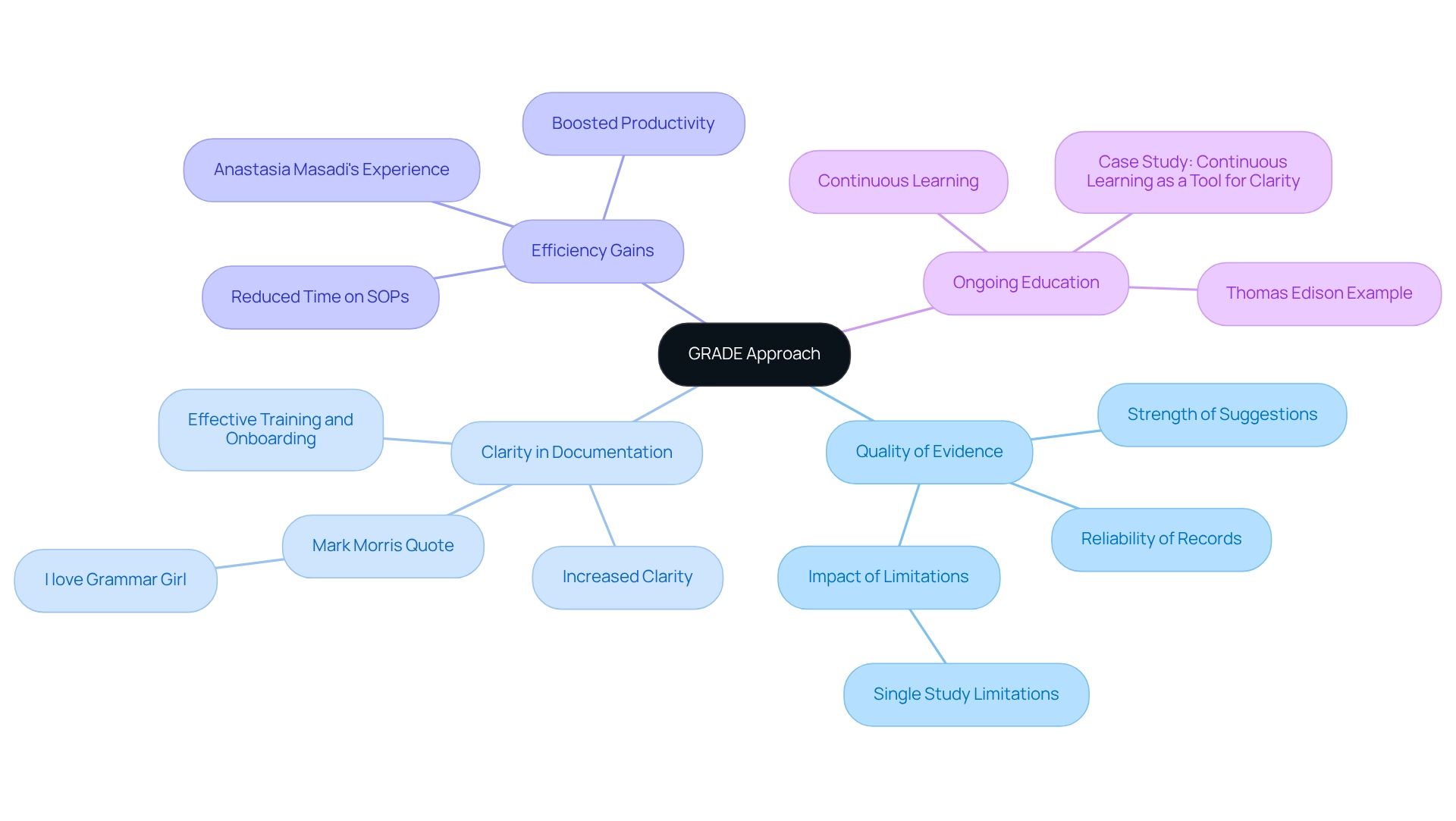
Checklists: Essential Tools for Consistency in Process Manuals
You might be wondering how checklists can really make a difference in the creation of a process manual sample. Well, they’re more than just a list; they serve as vital instruments that provide a structured framework to ensure every required step is thoroughly recorded. Their organized nature not only encourages uniformity across different guides but also allows for easy adaptation to suit specific procedures or tasks. By using checklists, organizations can significantly reduce mistakes and oversights, ensuring every element of a procedure is covered. Plus, this method is a fantastic aid in training new staff, boosting overall operational effectiveness with clear, step-by-step guidelines that are simple to follow.
Now, let’s talk numbers! Statistics show that using checklists in process records can lead to a significant drop in mistakes, which contributes to creating more reliable process manual samples. Specifically, checklists help keep track of completed and pending tasks for audits and reviews—super important for maintaining compliance and accountability. Operations managers often highlight are for consistency in records, with many noting that they serve as a crucial reference during audits and assessments.
For instance, organizations that have embraced a process manual sample report enhanced training efficiency, as these tools help newcomers grasp complex procedures more quickly. Speaking of that, case studies reveal that firms using checklists in their record-keeping have seen major improvements in consistency and clarity. Take SowFlow, for example; their user-friendly documentation tool lets teams create user guides with ease, and their Chrome extension allows for documenting workflows directly from the browser. This integration means swift and effective procedure capturing, making it easy to include checklists in user manuals. By ensuring that all team members have access to the same organized information, these organizations foster a collaborative environment where everyone is on the same page. Ultimately, checklists not only simplify record-keeping tasks but also enable teams to operate more efficiently and effectively.
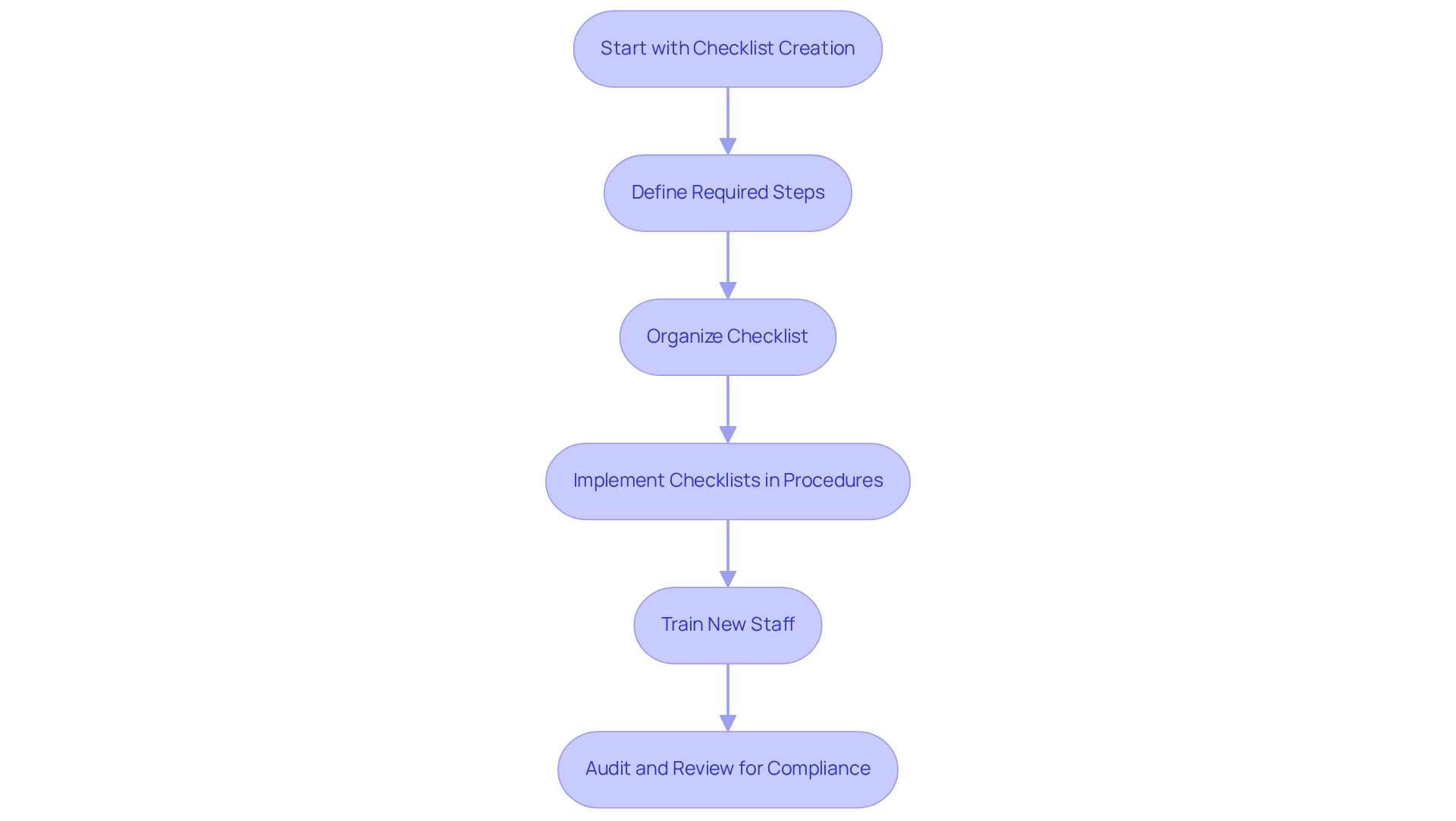
Sample Collections: Real-World Applications in Process Manuals
You might be wondering how process manual sample collections can really help your organization with record-keeping. Well, these resources are essential for anyone looking to enhance their methods. Think about it: onboarding guides and operational procedures are prime examples of best practices in clarity and organization. By diving into these samples, your team can uncover effective strategies tailored to your specific needs—all while aligning with industry standards. This approach not only simplifies record-keeping but also nurtures a culture of ongoing improvement.
Now, let’s talk numbers. Did you know that 47% of employees find their online filing systems cluttered with outdated or irrelevant files? That’s a clear sign that well-structured documentation is a must. Plus, 80% of organizations are grappling with challenges due to outdated digital technologies, which really puts a damper on efficiency and innovation. By tapping into , companies can elevate the quality of their procedures, ensuring they remain relevant and effective.
Real-world examples really bring this to life. For instance, organizations that implement structured record-keeping frameworks often report smoother onboarding experiences and standardized operational procedures. Just ask Anastasia Masadi, a Product Owner, who said, "This platform has been a game changer in the way we document work and deliver to our clients." She loves that she doesn't have to take each screenshot separately or even leave the browser to create SOPs and training materials. This service has truly saved her time! This testimonial shows how SowFlow not only streamlines the paperwork but also boosts the overall efficiency of creating SOPs and training materials. By embracing such tools, organizations can significantly level up their record-keeping practices, leading to increased productivity and smoother operations.
Templates and Forms: Streamlining Documentation in Process Manuals
You might be wondering why templates and forms are such a big deal when it comes to procedural guides. Well, they’re like the backbone of efficient documentation! By using pre-designed templates, organizations can ensure consistency across their process manual samples, which makes it much easier for employees to navigate and understand what they need to do. Plus, these templates are super adaptable—you can customize them to fit your specific processes or organizational needs while still looking professional. Not only does this save time, but it also boosts the overall quality of your records, making them more user-friendly.
Speaking of user-friendliness, let’s talk about how SowFlow steps in to help teams. It gives you immediate access to records, making it a breeze to create and update user guides. This means your records stay relevant in our fast-paced business world, letting you focus on what really matters. Did you know that research shows visual aids, like flowcharts and checklists, can actually improve how well people remember and follow procedures? Companies that have added these visual tools into their record-keeping have seen some impressive improvements in employee understanding and compliance. And guess what? Templates can easily incorporate these visuals, making them even more effective.
Now, let’s hear from the experts! stress how crucial templates are for maintaining a process manual sample. They advocate for standardization as a way to boost efficiency and adaptability within organizations. As SowFlow puts it, "In essence, a policy and procedure manual is a foundational resource that fosters efficiency, consistency, and adaptability in a small business." By simplifying record-keeping methods, templates not only enhance consistency and quality but also free up teams to focus on their core responsibilities. This ultimately leads to increased productivity and operational success. So, why not explore how templates can transform your documentation process?

Evidence Tables: Summarizing Data for Clear Process Documentation
You might be wondering how evidence tables can really make a difference in your workflow records. Well, they’re essential tools that help turn complex data into something clear and easy to understand. By letting teams quickly access crucial information, these tables really help clarify how different processes work and what they mean. Integrating evidence tables into your procedural guides not only makes your documentation clearer but also ensures that important data is right at your fingertips when you need to make informed decisions.
Now, let’s dive into how this works. With platforms like SowFlow, teams can easily create and update user guides. They get to use features like customizable templates and real-time collaboration, which means your evidence tables will always stay relevant and accessible, even as your business evolves. As Monika Piekarska puts it, "Data visualization is powerful. Still, data storytelling is the thing driving decision-makers. People take action when they interact with a data-evidenced proof of the story." This approach really helps build in process management by utilizing a process manual sample, making manuals more usable and operations smoother.
Organizations that do a great job of summarizing data in their documentation—especially when they leverage alternative tools—often report greater clarity and efficiency. This can lead to spending less time in meetings and boosting overall productivity. So, why not consider integrating evidence tables into your next user guide? It could be a game-changer for your team!
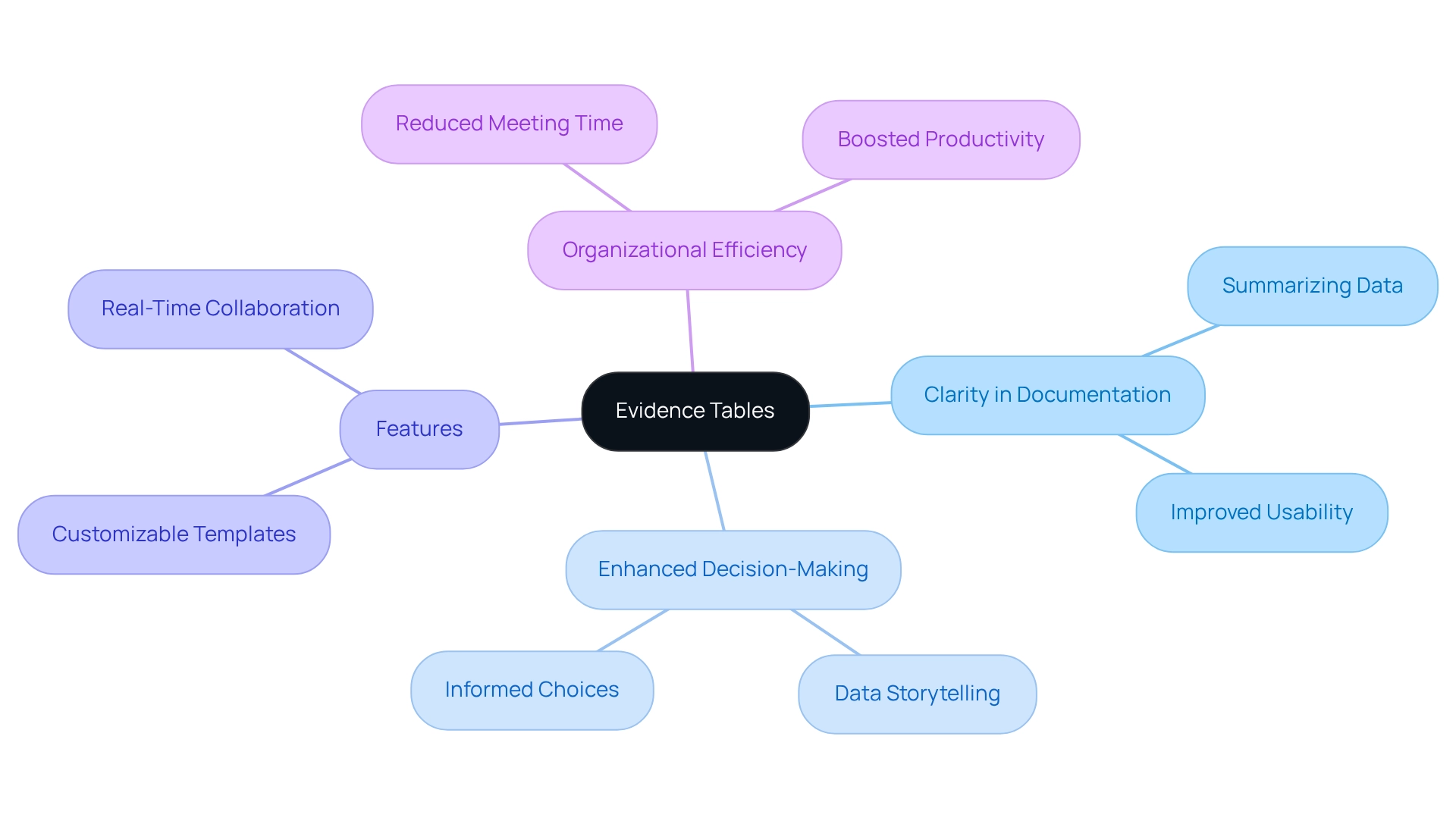
Defining Populations and Interventions: Tailoring Process Manuals for Specific Needs
You might be wondering why identifying groups and strategies is so important. Well, it’s crucial for tailoring guidelines to meet the specific needs of different teams or departments. By recognizing and utilizing a process manual sample for the processes they engage with, organizations can create materials that are not just relevant but also actionable.
As Michael Mncedisi Willie puts it, "By clearly defining the population, researchers can establish the boundaries and scope of the study, enabling them to draw meaningful conclusions and make valid inferences." This customized approach doesn’t just tackle the unique challenges each group faces; it also boosts the efficiency and applicability of the guides.
Clear definitions in records can enhance sampling strategies and the validity of research findings, as highlighted in the case study titled 'General, Target, and Accessible Population: Demystifying the Concepts for Effective Sampling.' Now, customizing guides for specific groups leads to better involvement and compliance with procedures since users see the process manual sample as directly relevant to their roles.
As Anastasia Masadi, a Product Owner, shares, "SowFlow has been a game changer in the way we document work and deliver to our clients. I do not have to take each screenshot separately, and do not even have to leave the browser while I am creating SOPs and training materials. This service returned some of my time."
Statistics show that focused procedure guides can enhance usability by as much as 30%, making a strong case for operations managers to invest in this strategy. So, why not consider how tailored documentation could transform your team's workflow?
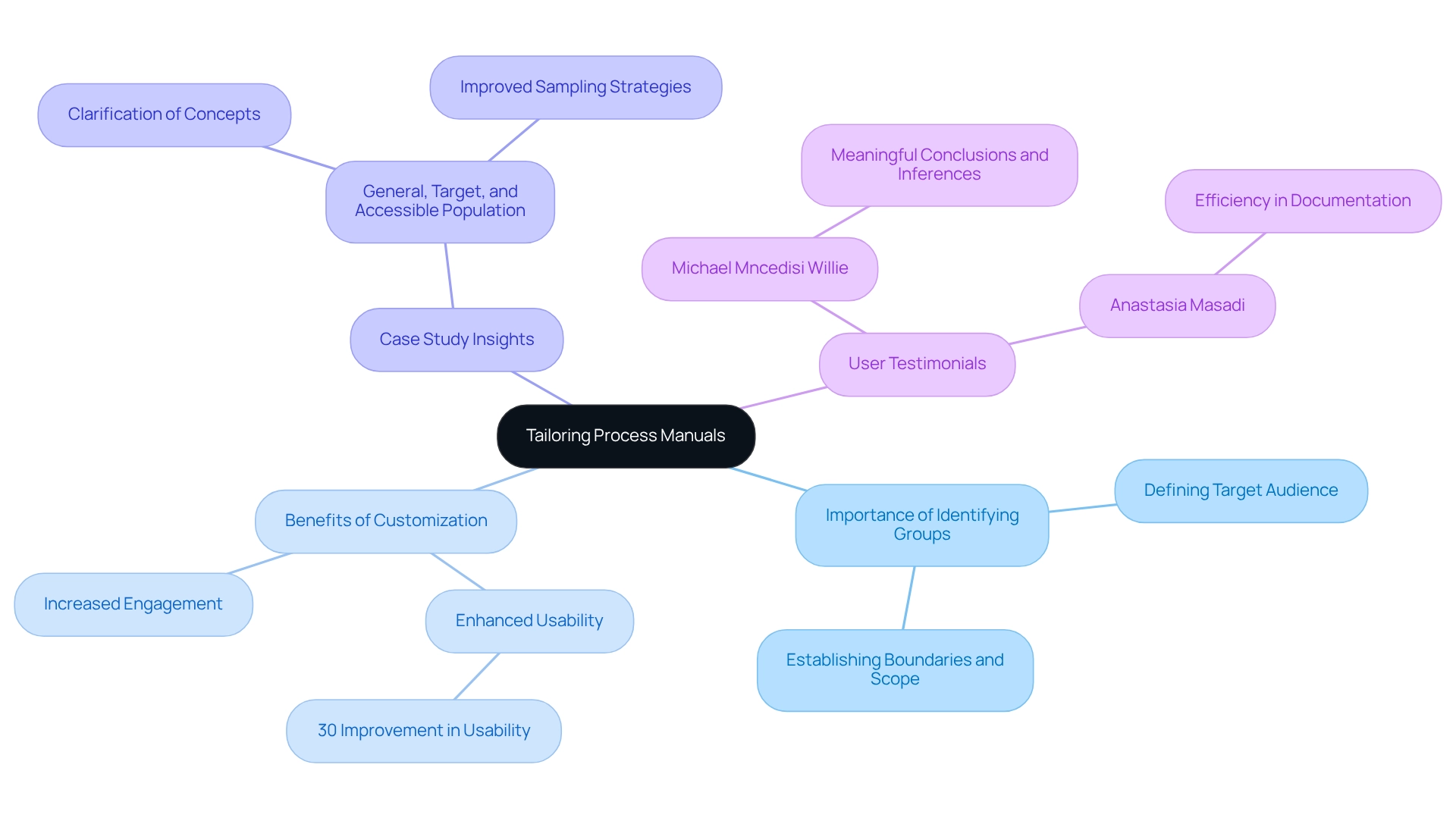
Outcome Importance: Prioritizing Key Elements in Process Manuals
You might be wondering why focusing on essential results in procedural documents is so important. Well, it’s all about making sure that your records align with . By honing in on the most crucial components, teams can create a process manual sample that not only guides users through processes but also highlights the importance of achieving specific outcomes. This outcome-oriented approach doesn’t just drive continuous improvement; it also inspires teams to refine their processes based on documented results.
Now, let’s talk about accountability and performance excellence. Clearly defining desired results helps cultivate a culture that values these traits, which is key for any organization’s success. Research shows that organizations aligning their records with key performance indicators (KPIs) see better decision-making and overall performance. For instance, a study on public-sector organizations in Vietnam found that a results-oriented culture positively impacts performance, suggesting that effective record-keeping can significantly influence outcomes.
And here’s a fun fact: statistics reveal that 59% of people who visualize their goals feel more confident. This really underscores the importance of clearly defining desired results in your process manual samples. But wait, there’s more! Understanding the difference between leading and lagging indicators is crucial when selecting KPIs to ensure your records align with your goals. As business conditions change, regularly reviewing and adjusting these KPIs is essential to keep your records relevant and effective. By incorporating these principles into your process manual sample, you can transform your records into a powerful tool for achieving your strategic goals.
Up-to-Date Documentation: Ensuring Relevance in Process Manuals
Keeping your operational manuals, such as the process manual sample, up to date is super important for ensuring they stay relevant and effective in your organization. With SowFlow's handy reference tools, your team can easily whip up and refresh user guides, which means you can seamlessly integrate user feedback and systematic reviews. This proactive approach helps organizations quickly adapt to changes in procedures, technologies, and strategic goals, ensuring everyone has access to the most accurate and helpful information.
You might be surprised to learn that 47% of businesses that have digitized their document processes report gaining new customers. This really highlights is! Plus, organizations that set up regular review schedules for their guidelines often see a boost in operational efficiency. For example, a case study on small and midsize businesses (SMBs) pointed out the struggles of sticking to paper-based document management, which can really get in the way of accessibility and business continuity. Switching to digital systems like those offered by SowFlow not only smooths out processes but also gives you a competitive edge.
Experts agree that regular reviews help create a culture of continuous learning and adaptation. Documentation specialists emphasize the importance of keeping the process manual sample updated, as outdated information can lead to inefficiencies and miscommunication. As one specialist put it, "Regular evaluations are essential for upholding the integrity of records and ensuring that teams have access to the most pertinent information."
So, what are the best ways to keep your records fresh? Establishing clear review schedules, using collaborative tools for feedback, and making sure all team members are involved in the record-keeping process are key. By emphasizing the importance of your procedural guides and leveraging instant documentation solutions—like the ability to pull up information with just a command and easily refresh guides—you can significantly boost your operational efficiency and responsiveness. To make this happen, operations managers might want to consider setting up a quarterly review schedule using SowFlow's tools to enhance efficiency.
Evidence-to-Decision Framework: Guiding Effective Process Manual Development
You might be wondering how the Evidence-to-Decision (EtD) framework can really make a difference in developing effective process manual samples. Well, it’s all about systematically assessing evidence and considering key factors, which helps organizations make informed choices about what goes into their records. This framework pushes for a thorough look at the activities being documented, ensuring that all the relevant information is included and presented clearly. Organizations that have jumped on the EtD bandwagon have seen some impressive improvements in record quality and compliance, leading to better operational outcomes.
In practice, encourages teams to rigorously assess evidence, which is crucial for creating a process manual sample that is not just informative but also actionable. Take the National Disease Management Guidelines in Germany, for example; they show how structured frameworks can set the necessary standards for record-keeping. This really highlights the potential impact of the EtD framework. By using this structured approach, organizations can create a process manual sample that reflects best practices and aligns perfectly with their operational goals. A study even found that backing EtD frameworks by guideline-developing organizations could enhance the quality of their guidelines, underscoring the framework's importance in development.
You’ll be pleased to know that the successful application of the EtD framework has been spotted across various sectors. A great case study titled "Evidence-to-Decision Frameworks in Environmental Health" showcases its versatility and effectiveness in developing documentation. And let’s not forget about the transformative impact of tools like this! As Product Owner Anastasia Masadi put it, "This tool has been a game changer in the way we document work and deliver to our clients." Imagine not having to take each screenshot separately or leave the browser while creating SOPs and training materials—this service has really saved some time! It shows how the platform lets teams develop SOPs and training materials on the fly, boosting productivity and simplifying record-keeping tasks.
SowFlow’s features, like browser-based SOP creation and automated screenshot capture, directly support the EtD framework by streamlining record-keeping. This means teams can focus on producing quality content instead of getting bogged down by monotonous tasks. As a result, you can expect a significant boost in the clarity and usability of your process manual sample, which will create a more organized and efficient work environment. Plus, insights from the Non-Surgery Panel about thoroughly assessing evidence in decision-making emphasize the EtD framework's crucial role in ensuring high-quality records. If you're curious about how SowFlow can transform your documentation processes, why not consider booking a demo today?
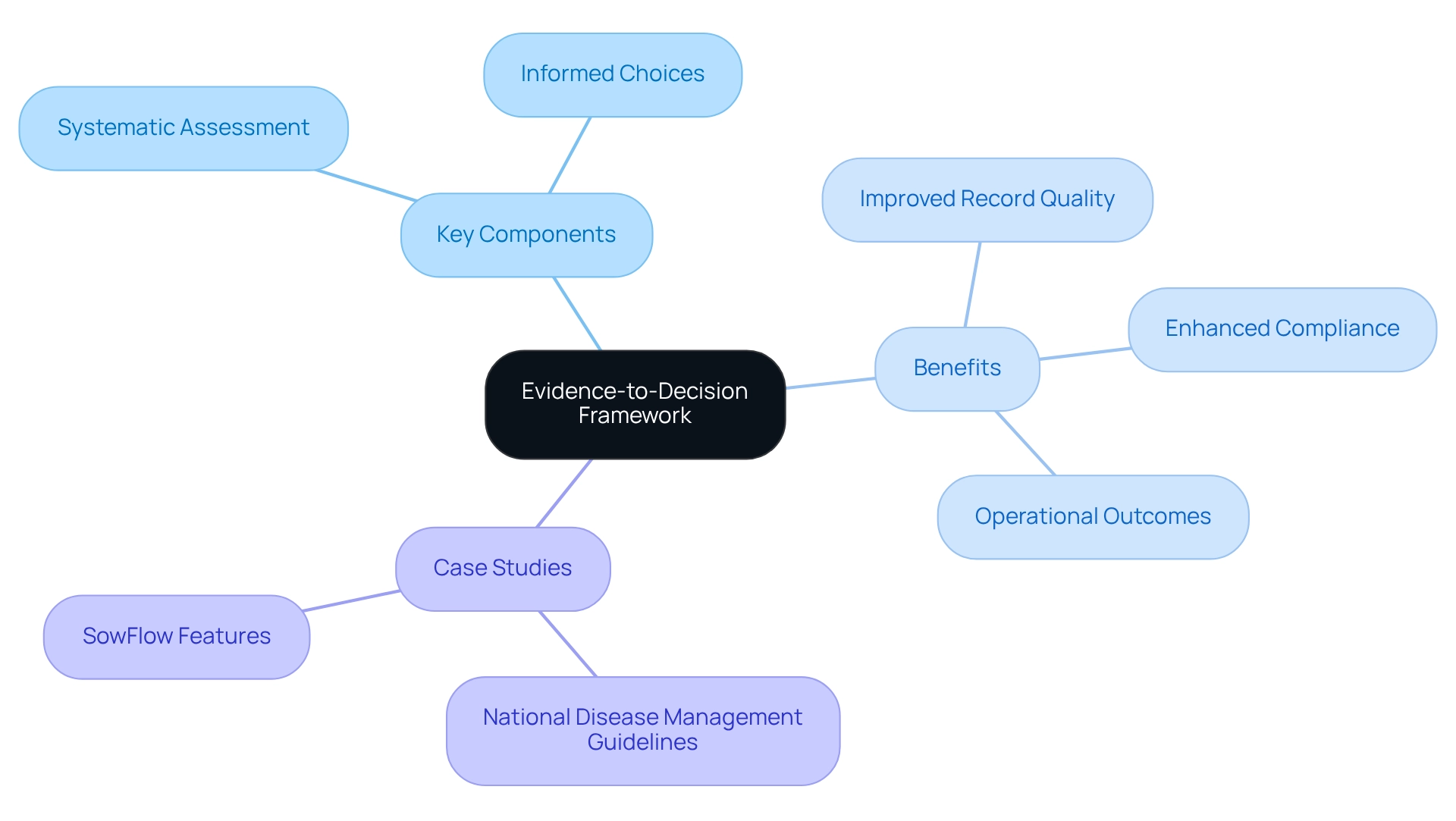
Conclusion
You know, effective process documentation is really crucial in today's fast-paced business world, and tools like SowFlow are shaking things up in a big way. By allowing real-time creation of process manuals, SowFlow boosts efficiency and keeps documentation fresh and user-friendly. Plus, with methods like the GRADE approach, checklists, and templates, the documentation process becomes a breeze, promoting clarity and consistency that can really enhance operational performance.
Now, let’s think about how evidence tables and customized process manuals highlight the need for clear and actionable documentation. When organizations focus on specific populations and outcomes, they create resources that truly connect with their teams, boosting engagement and adherence to those important processes. And don’t forget, keeping documentation up-to-date through regular reviews is key to staying relevant and effective, helping teams adapt quickly to any changes that come their way.
In wrapping this up, integrating innovative documentation practices and tools like SowFlow isn’t just a passing trend; it’s a must for organizations aiming for operational excellence. By tapping into these strategies, businesses can elevate their documentation quality, enhance training outcomes, and ultimately drive better performance. Embracing these methodologies sets the stage for a more organized, efficient, and responsive operational framework, empowering teams to focus on what really matters—achieving their goals.
Frequently Asked Questions
How does the platform improve the process of creating manuals?
The platform allows users to create comprehensive guidelines in real-time, reducing record-keeping time and ensuring that information is up-to-date and easily accessible. It enables users to record workflows directly from their browser, simplifying complex tasks into step-by-step instructions.
What benefits do operations managers gain from using this platform?
Operations managers can standardize processes and establish effective standard operating procedures (SOPs), leading to enhanced operational efficiency and reduced chaos compared to traditional record-keeping methods.
What impact does digitizing document processes have on companies?
Research indicates that 47% of companies that digitized their document processes attracted new customers due to improved efficiency and enhanced customer experiences.
How does the GRADE approach enhance the quality of documentation?
The GRADE approach provides a structured methodology for creating thorough and actionable procedure guides by evaluating the strength of suggestions based on the quality of evidence, ensuring that records are reliable and user-friendly.
What are the advantages of implementing the GRADE method?
Organizations using the GRADE method experience increased clarity in documentation, better adherence to procedures, and improved outcomes, while also reducing the time spent on records and SOPs.
How do checklists contribute to the creation of process manuals?
Checklists provide a structured framework that ensures every required step is recorded, promoting uniformity across guides and reducing mistakes and oversights, which is crucial for effective training and operational effectiveness.
What statistical benefits are associated with using checklists in process records?
Using checklists can significantly reduce mistakes, enhance training efficiency, and improve consistency and clarity in process manual samples, which is vital for maintaining compliance and accountability.
How does SowFlow facilitate the creation of user guides and checklists?
SowFlow offers a user-friendly documentation tool that allows teams to create user guides easily. Its Chrome extension enables documenting workflows directly from the browser, making the process of capturing procedures swift and effective.
👍
What others are liking
5 Steps to outline your ideal documentation structure
5 MINS READ
Where to start the your journey of mapping out your ideal documentation structure, aligning it with the very heartbeat of your organization?
Defining a winning level of detail in your process
3 MINS READ
What is too much detail, and what is too little? This article described in that winning level detail about what detail is enough.





